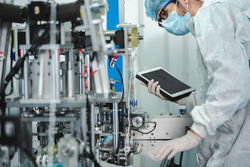 As the UK continues to reconfigure itself following Brexit, medical device regulation has emerged as an important area for the country to set itself apart from its continental neighbours.
As the UK continues to reconfigure itself following Brexit, medical device regulation has emerged as an important area for the country to set itself apart from its continental neighbours.
The government is aiming to establish the UK’s credentials as a leading global regulator, putting a particular emphasis on safety and innovation to help attract investment and fuel growth.
Here, we look at the past, present, and future of medical device regulation to assess the impact of Brexit and outline the shape of things to come.
The past
Within the EU, medical devices are regulated by three separate pieces of legislation, covering medical devices, active implantable devices, and in vitro diagnostic services.
Harmonised standards are used within the EU to provide ‘presumption of conformity’ to EU Directives. As a member state of the EU, the UK was formerly required to implement EU Directives into UK law. The role of implementation and regulation was carried out by the Medicines and Healthcare Products Regulatory Agency (MHRA).
The present
This year, two new EU Directives came into force: the Medical Device Regulations (MDR) and the In Vitro Diagnostic Devices Medical Regulations (IVDR).
These two new directives introduced a number of changes, including:
- Stricter classification of medical devices, with many devices being up-classified, and a new classification system under the IVDR that requires more in vitro devices (IVDs) to undergo a conformity assessment by a Notified Body
- An expanded quality management system with additional requirements such as manufacturers needing to appoint a Person Responsible for Regulatory Compliance (PRRC)
- Increased scrutiny and supervision of the competence of Notified Bodies
- Tighter evaluation requirements for clinical/performance evaluations, including the introduction of a new EU expert panel for high-risk devices
- A new unique device identification system to improve traceability
- Greater transparency through the EUDAMED database which provides information on devices, clinical investigations, economic operators, Notified Body certificates and vigilance and market surveillance
The UK government has said it will not adopt the changes introduced under MDR and IVDR, except for Northern Ireland where the new directives apply.
Within Great Britain, transposed regulation reflecting the EU Directives that applied at the point of the UK’s departure from the EU will apply for the duration of the interim period, which concludes at the end of June 2023. The UK government maintains a list of designated standards which mirrors EU harmonised standards for EU Directives.
The future
Medical regulation in Northern Ireland will continue to follow the regime that applies within the EU, for example the new MDR and IVDR. In Great Britain, the MHRA will develop new regulations for England, Scotland and Wales, which will replace current EU Directive-based legislation. New regulations are currently undergoing a public consultation and will then proceed to parliament as legislation.
It is likely that harmonised EU standards and designated UK standards will continue to co-exist. While the UK is no longer required to implement these standards, they are often based on standards developed by independent European standards-making bodies with input from the UK.
The Medicines and Medical Devices Act 2021 sets out how medical technology will function in Great Britain following Brexit. It includes:
- Increased powers for MHRA
- Responsibility for medical device rules lying with the Secretary of State for Health and Social Care, with a focus on making the UK an ‘attractive place’ for medical device development and production
- A focus on improved patient safety through better communication, learning from earlier mistakes such as vaginal mesh problems
Covid lessons
An August 2021 report from the Regulatory Horizons Council speculates that we may be about to see stronger regulation combined with an approach that is shaped by lessons learned from the COVID-19 pandemic. The report suggests that the UK Life Sciences sector could be boosted by:
- Putting patients at the heart of the decision-making process, for example by increasing patient representation on expert panels
- Simplifying evaluations of medical devices so they are easier for lay people to understand
- Learning from COVID-19 experiences to make medical device approval faster and more effective
- Using medical device regulation as a template for post-Brexit regulation of other medical areas
- Using regulatory reform to attract investment and growth
BSI can help you stay on top of developments in this fast-changing area. Why not take a look at current BSI webinars on medical device regulation?

 As the UK continues to reconfigure itself following Brexit, medical device regulation has emerged as an important area for the country to set itself apart from its continental neighbours.
As the UK continues to reconfigure itself following Brexit, medical device regulation has emerged as an important area for the country to set itself apart from its continental neighbours.